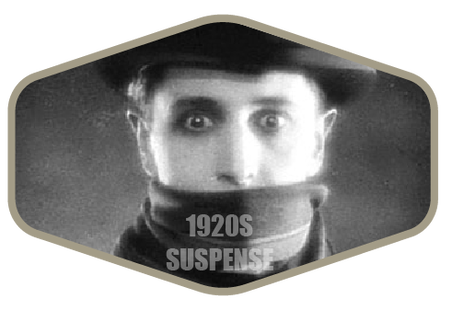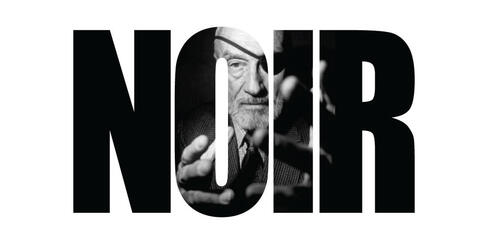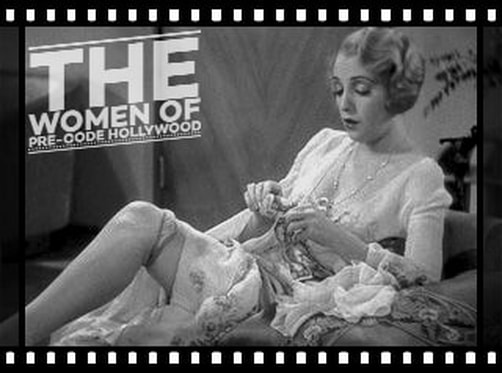With the end of World War I and the National Prohibition Act ratified in 1919, the 1920s was witness to a great social and economic transition that brought about “The Roaring Twenties.” It was the perfect era for the surgency of the crime drama genre.
It was a period of world cynicism, the spread of speakeasies and corruption. Given the 1910s were a period of intense immigration, 1920s cinema was fertile ground for notable Expressionistic German film makers: Josef von Sternberg, F.W. Murnau and Fritz Lang. Many of the films in this era were vivid in their violence, unencumbered by The Motion Picture Production Code (Hays Code) that was to follow in 1934.
Noteworthy actors in this early genre: Wallace Beery, Warner Baxter, Claudette Colbert, William Powell, Clive Brook, Barbara Stanwyck, Lionel Barrymore, and Lon Chaney.
It was a period of world cynicism, the spread of speakeasies and corruption. Given the 1910s were a period of intense immigration, 1920s cinema was fertile ground for notable Expressionistic German film makers: Josef von Sternberg, F.W. Murnau and Fritz Lang. Many of the films in this era were vivid in their violence, unencumbered by The Motion Picture Production Code (Hays Code) that was to follow in 1934.
Noteworthy actors in this early genre: Wallace Beery, Warner Baxter, Claudette Colbert, William Powell, Clive Brook, Barbara Stanwyck, Lionel Barrymore, and Lon Chaney.
SUSPENSE FILMS FILMS OF THE 1920s
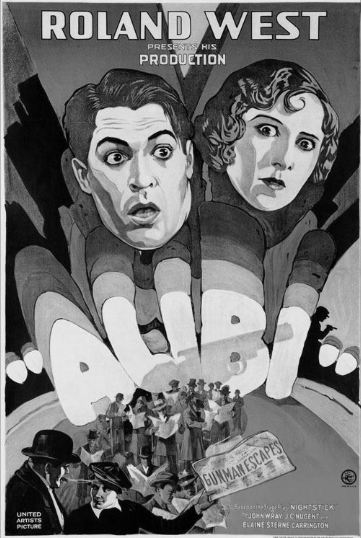 ALIBI (1929)
ALIBI (1929) (90 Min.) Genre: 1920 SUSPENSE, Transfer Quality: A
Director Roland West was a moody and mysterious Hollywood character, who insisted upon making his pictures in utter secrecy and filming only at night. This may explain the overall foreboding atmosphere of Alibi, West's first talking picture. Chester Morris portrays a ruthless gangster who must establish an alibi after pulling off a warehouse robbery. Regis Toomey and Pat O'Malley are the detectives assigned to get the goods on Morris. Full of vicious bravado when he's on top of a situation, Morris turns into a craven coward when he's trapped—but not before coldbloodedly gunning down true-blue policeman Toomey, who then launches into one the longest and most lachrymose death scenes in the history of movies. Alibi was based on the play Nightstick, written by John Wray, J.C. Nugent and Elaine Sterne.
Starring: Chester Morris, Harry Stubbs, Mae Busch, Eleanor Griffith | Directed by: Roland West
 BEGGERS OF LIFE (1928)
BEGGERS OF LIFE (1928) (92 Min.) Genre: 1920 SUSPENSE, Transfer Quality: B
Wallace Beery appeared in this silent film with intertitles, a dark drama of hobo life. Jim (Richard Arlen), a wanderer, comes upon young Nancy (Louise Brooks), who has just killed the guardian who was trying to rape her. Disguised as a boy, she takes off with Jim and rides the rails to a hobo camp led by Arkansas Snake (Robert Perry). When Oklahoma Red (Beery) takes over the camp, he begins to pursue Nancy, but before he can take her from Jim, the detectives show up to arrest her. He escapes with Nancy and Jim, and when he sees how much they love each other, Red helps them escape by creating a diversion, during which the detectives kill him.
Starring: Wallace Beery, Louise Brooks, Richard Arlen, Blue Washington | Directed by: William Wellman
 BEHIND THAT CURTAIN (1929)
BEHIND THAT CURTAIN (1929) (91 Min.) Genre: 1920 SUSPENSE, Transfer Quality: C
Irving Cummings was a good choice to direct this third Charlie Chan feature, the first to use sound, as he had previously made the first all-talking picture of any kind, In Old Arizona (also 1929). Chan fans may be disappointed in this globe-trotting mystery, however, as the detective (played by Korean actor E.L. Park) only appears in a few scenes. The story begins with a murder in London and the prime suspect is Colonel John Beetham (Warner Baxter), who is hiding pretty heiress Eve Mannering (Lois Moran) from her evil, philandering husband Eric Durand (Philip Strange). The action goes from England to Persia to India and finally ends up in San Francisco, where Chan prevents the golddigging Durand — whom Eve has left for good — from killing Beetham. Gilbert Emery, who plays a dedicated Scotland Yard detective, was originally envisioned as a big matinee idol, but was eventually relegated to thankless roles such as the one he plays here. The film is more noteworthy for its introduction of Boris Karloff to sound features, in a small role as a servant from Sudan who mutters inscrutable nonsense about the whims of the desert. The 20th Century Fox series began with 1928's The Chinese Parrot, starring another Asian performer (Sojin) as Chan, before Swedish actor Warner Oland took over the role in Charlie Chan Carries On and The Black Camel (both 1931), playing the unflappable detective until his death in 1938.
Starring: Warner Baxter, Lois Moran, Gilbert Emery, Claude King | Directed by: Irving Cummings
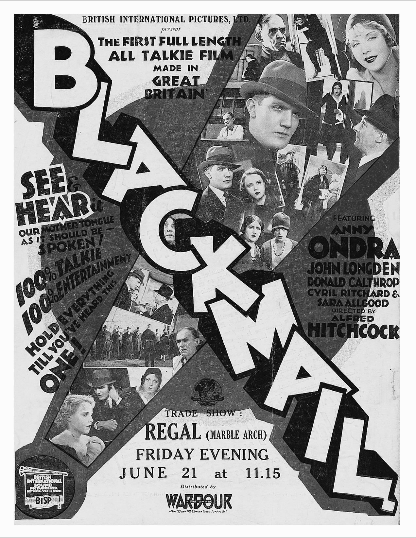 BLACKMAIL (1929)
BLACKMAIL (1929) (86 Min.) Genre: 1920 SUSPENSE, Transfer Quality: A
Alfred Hitchcock's first sound film utilized the new sound technology in a rather creative way off-camera. Hitchcock's lead actress, Anny Ondra, had a strong Eastern European accent that was difficult for English audiences to understand, so Hitchcock's solution was to have British actress Joan Barry speak Ondra's lines of dialogue off-camera. The film concerns a woman who kills a man who tries to assault her. Ondra plays Alice White who, while having dinner in a fancy English nightspot with her husband-to-be Scotland Yard Detective Frank Webber (John Longden), begins to flirt with an artist (Cyril Richard) seated at the next table. The artist invites her up to see his studio, and she goes but balks when the artist asks her to pose in the nude. When the request becomes a demand, Alice stabs him to death. She rejoins her fiance and tries to forget the murder, but her conscious keeps bothering her. To make matters worse, sniveling rat Tracy (Donald Calthrop) materializes to blackmail Alice for the crime. — Paul Brenner
Starring: Anny Ondra, Sara Allgood, John Longden, Charles Paton | Directed by: Alfred Hitchcock
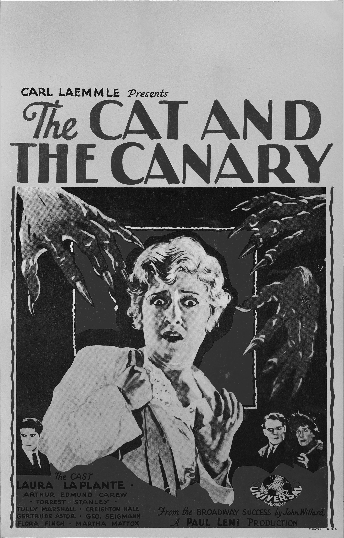 CAT AND THE CANARY, THE (1927)
CAT AND THE CANARY, THE (1927) (70 Min.) Genre: 1920 SUSPENSE, Transfer Quality: A
Frank Willard's barn-storming stage melodrama Cat and the Canary was filmed four times over a fifty-year period. This silent 1927 version stars Laura LaPlante as one of several potential heirs to a huge fortune. Brought to a foreboding mansion on the 20th anniversary of their eccentric benefactor's death, the heirs must sit in silence as the lawyer (Tully Marshall) recites the terms of the will. The legacy hinges upon three sealed letters, each to be opened at a strategic point in the evening. Also crucial to the inheritance is the insistence that all the heirs spend the night in the creepy old mansion. Nervous Creighton Hale appoints himself LaPlante's protector—a far from simple job, given the many hidden panels and revolving doors which festoon the house. When the lawyer is murdered, LaPlante is the principle suspect. Cat and the Canary was remade as The Cat Creeps in 1930, and under its own title in 1939 (with Bob Hope and Paulette Goddard) and 1979.
Starring: Laura La Plante, Creighton Hale, Forrest Stanley, Tully Marshall | Directed by: Paul Leni
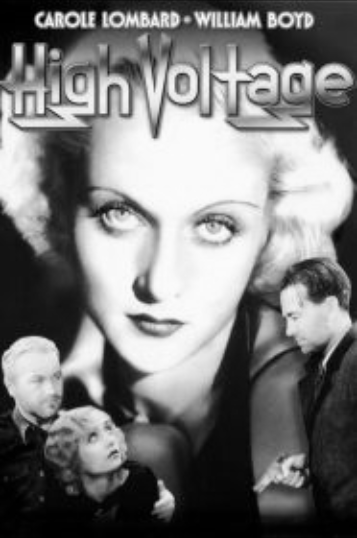 HIGH VOLTAGE (1929)
HIGH VOLTAGE (1929) (62 Min.) Genre: 1920 SUSPENSE, Transfer Quality: B
In one of her first talking pictures, Carole Lombard played a girl crook falling in love with a handsome lineman (William Boyd) while marooned during a snow storm. Crossing the High Sierras in a bus, a group of travelers find themselves stranded in a small village and at the mercy of Bill Dougherty (Boyd), a lineman who apportions them a small amount of food. Despite warnings from detective Dan Egan (Owen Moore), Billie Davis (Lombard), the girl crook, falls in love with Bill, who turns out to be an escaped convict. Briefly planning to flee, Bill and Billie decide to serve their sentences and share a happier future together. High Voltage was produced by Pathé and featured blonde newcomer Diane Ellis as a young girl en route to her wedding. Ironically, Ellis died less than a year later from a rare tropical disease while honeymooning in India.
Starring: Carole Lombard, William "Stage" Boyd, Billy Bevan, Owen Moore, Phillips Smalley | Directed by: Howard Higgin
 HOLE IN THE WALL, THE (1929)
HOLE IN THE WALL, THE (1929) (73 Min.) Genre: 1920 SUSPENSE, Transfer Quality: B
Claudette Colbert and Edward G. Robinson both made their talking-picture bows in Paramount's The Hole in the Wall. Based on a play by Fred Jackson, the story is set in motion when Jean Oliver (Colbert), seeking vengeance against the wealthy dowager who had her sent to prison, poses as a fortune teller named Mme. Mystera and charms her way into the dowager's home. It is Jean's plan to kidnap the old woman's granddaughter Marcia (Marcia Kagno) and teach the young girl to be a thief. But this insidious scheme is complicated when The Fox (Edward G. Robinson), a dapper but ruthless gangster, falls in love with Jean. When Jean spurns his advances, The Fox spitefully kidnaps Marcia and ties the poor child to a railway-dock pillar, leaving her at the mercy of the tide. In the process, the Fox is himself drowned, leaving Marcia's fate in the hands of crusading reporter Gordon Grant (David Newell) -- who also is in love with Jean! For years, Edward G. Robinson dismissed Hole in the Wall as a disaster and refused to watch it, until his co-star Claudette Colbert caught the film on TV and convinced Robinson that it wasn't so bad after all.
Starring: Claudette Colbert, Edward G. Robinson, Nellie Savage, Donald Meek, Alan Brooks | Directed by: Robert Florey
 INTERFERENCE (1928)
INTERFERENCE (1928) (90 Min.) Genre: 1920 SUSPENSE, Transfer Quality: B
Paramount's first all-talking picture, Interference was dismally directed by Roy Pomeroy, whose lofty status as the studio's "technical wizard" did not necessarily qualify him to be a director. Evelyn Brent heads the cast as scheming Deborah Kane, who sets out to blackmail Faith Marley (Doris Kenyon), the above-reproach wife of Sir John Marlay. Twisting the facts to suit her purposes, Deborah claims that Faith is still married to her first husband Philip Voaze (William Powell), who was presumed killed in WWI. Inevitably, Deborah is murdered, prompting both Faith and John to assume that the other has committed the crime. Accordingly, both husband and wife tamper with the evidence to throw the police off the trail, but the detective on the case (Brandon Hurst) is a bit too quick on the uptake. Only the last-minute confession of the actual killer (who has but a short time to live anyway) saves the Marlays from public humiliation and disgrace. Based on a stage play by Roland Petwee and Harold Dearden, Interference was simultaneously filmed in a silent version, which reportedly was better paced than the talkie adaptation. Years after the fact, co-star Clive Brook recalled that when Interference premiered in London, the needle became stuck on one of the soundtrack disks, causing Brook's character to repeatedly recite the deathless line "Another of those damned postcards -- another of those damned postcards -- another of those damned postcards."
Starring: William Powell, Clive Brook, Evelyn Brent, Brandon Hurst, Doris Kenyon | Directed by: Lothar Mendes / Roy J. Pomeroy
 LOCKED DOOR, THE (1929)
LOCKED DOOR, THE (1929) (70 Min.) Genre: 1920 SUSPENSE, Transfer Quality: B
In this drama, which marks Barbara Stawyck's Hollywood film debut, a woman is taken to an illegal cabaret set aboard a wealthy man's yacht. Her captor, the owner, then locks her in a stateroom. When the cops raid the joint, she is photographed with the wealthy cad. Time passes and the woman ends up marrying her new boss. The cad gets involved with her sister-in-law. Later her new husband and the creep get in a fight over the woman. A shot is fired and the millionaire dies. The police then find the woman locked in her room. To spare her husband, the woman confesses to killing the cad. Her husband refuses to let her take the fall for his crime and she is freed.
Starring: Rod La Rocque, Barbara Stanwyck, William "Stage" Boyd, Betty Bronson | Directed by: George Fitzmaurice
 LODGER, THE (1926)
LODGER, THE (1926) (91 Min.) Genre: 1920 SUSPENSE, Transfer Quality: A
Described by Alfred Hitchcock himself as the "first true Hitchcock film," The Lodger is a suspenseful Jack-the-Ripper tale that features one of the master's most familiar themes: an innocent man who is blamed for a crime. In the case of this 1926 silent about a killer who targets blondes, that man is a mysterious lodger in a London apartment house played by British screen star Ivor Novello. The actor does a terrific job of casting suspicion on himself by alternating between being sinister and sincere. The plot is similar to that of 1941's Suspicion, but unlike the weak ending of that Hitchcock classic, The Lodger's conclusion is stunning: Novello being chased across town by an angry lynch mob that believes he is the killer. In only his third film, Hitchcock's creative style and willingness to innovate are already apparent. The story is carried entirely by its images, with only a minimal number of title cards used for dialogue. The director shot the opening scene as a combination of images that set up the entire plot and convey the terror of the situation, all with only a few words. In another chilling scene that shows the fright of the building's owners as they see a chandelier shaking, Hitchcock used a see-through Plexiglas ceiling to show that the movement is caused by the lodger, who nervously paces above them. The Lodger marked the first of Hitchcock's famed onscreen appearances, due to the fact that he was needed as an extra. He is seen in two spots, first as a man in a mailroom during the opening sequence, then again at the end as an onlooker to the mob scene. — Patrick Legare
Starring: Ivor Novello, Malcolm Keen, Alfred Hitchcock, Marie Ault | Directed by: Alfred Hitchcock
 PENALTY, THE (1920)
PENALTY, THE (1920) (73 Min.) Genre: 1920 SUSPENSE, Transfer Quality: A
Among Lon Chaney's early villainous roles was Blizzard, the criminal mastermind of this melodrama set in San Francisco's Barbary Coast neighborhood. As a young man, Blizzard was the victim of an auto accident, and a quack doctor had mistakenly ordered his legs amputated at the knees. He grows up an embittered, violent man interested only in taking revenge on the rich and powerful, especially the doctor who maimed him and is still practicing. Rose, a secret service agent (Ethel Grey Terry), is dispatched to infiltrate Blizzard's gang, but she falls under his spell and becomes his mistress. Blizzard is himself attracted to a lovely artist who wants to paint his portrait, but she resists his advances. Ultimately, Blizzard's plan to have another man's legs grafted onto his own is thwarted when it's discovered that the long-ago accident had caused a reversible brain injury which turned him to the dark side. Rather than perform the operation on his legs, the doctor repairs Blizzard's brain, and Blizzard awakens to find that he is no longer interested in a life of crime. He marries Rose, but his criminal associates decide he must pay the ultimate penalty for his knowledge of their activities.
Starring: Montgomery Carlyle, Lionel Barrymore, Wilson Hummell, Lon Chaney | Directed by: Wallace Worsley, Sr.
 UNHOLY NIGHT, THE (1929)
UNHOLY NIGHT, THE (1929) (94 Min.) Genre: 1920 SUSPENSE, Transfer Quality: A
A group of Londoners gather at the home of their host in order to solve the murders of two company officers. Once assembled the host announces that half of one of the deceased's fortune will go to the guests and if anyone should die, that person's share would go to the others. Before any money is doled out, the doors are locked and the host insists that the murderer confess. Mayhem ensues, but eventually the killer tells all. — Sandra Brennan
Starring: Ernest Torrence, Roland Young, Dorothy Sebastian, Natalie Moorhead | Directed by: Lionel Barrymore
 UNHOLY THREE, THE (1925)
UNHOLY THREE, THE (1925) (70 Min.) Genre: 1920 SUSPENSE, Transfer Quality: A
To base a silent film on a character that depends wholly on sound to be effective — a ventriloquist for example — may seem like sheer folly, but that is exactly what director Tod Browning and screenwriter Waldemar Young set out to do in The Unholy Three. That they succeeded as well as they did is mainly due to the amazing Lon Chaney, who made as convincing a carnival performer masquerading as a little old lady as he did a hunchback. Not that The Unholy Three stands up to too much scrutiny. Why, for instance, would Chaney's larcenous Grandma O'Grady risk his entire operation on a straight arrow like Matt Moore's Hector? And how come everyone is engaged in cataloguing the content of their safe at the very moment Grandma and Tweedledee (Harry Earles) arrive to case the joint? Such questions should of course never be asked of an unabashed melodrama like The Unholy Three, which depends entirely on the audience's ability to suspend disbelief. — Hans J. Wollstein
Starring: Lon Chaney, Mae Busch, Matt Moore, Victor McLaglen, Harry Earles | Directed by: Tod Browning
 UNKNOWN, THE (1927)
UNKNOWN, THE (1927) (60 Min.) Genre: 1920 SUSPENSE, Transfer Quality: A
As a group, the silent-movie collaborations between director Tod Browning and star Lon Chaney hardly represent the best work of either man, though each film definitely has its moments. One of the best, and weirdest, of the batch is The Unknown. Chaney plays a carnival performer known as the "Armless Wonder," who performs near-miraculous stunts with his bare feet. In fact, he is in possession of both his arms, but keeps them strapped to his side to maintain the illusion of being limbless. Chaney's beautiful assistant Joan Crawford has a pathological fear of being touched by any man. This leads Chaney to believe that he is attractive to Crawford so long as his keeps his arms hidden. Halfway through the film, Chaney murders the circus manager—a crime witnessed by Crawford, who was only able to glimpse Chaney's distinctively mutated thumb. To cover up his crime, and to make himself the perfect mate for Crawford, Chaney blackmails a doctor into amputating his arms. Upon returning to the carnival, the now-genuinely armless Chaney learns to his horror that Crawford has overcome her aberration of being touched, thanks to handsome circus strong man Norman Kerry. Enraged, Chaney plots to kill Kerry in a horrible fashion...but guess who ends up seriously dead? — Hal Erickson
Starring: Lon Chaney, Norman Kerry, Joan Crawford, Nick De Ruiz | Directed by: Tod Browning
 VALIANT, THE (1929)
VALIANT, THE (1929) (61 Min.) Genre: 1920 SUSPENSE, Transfer Quality: B
The Valiant began life as a one-act play by Holworthy Hall and Robert Middlemass. It is a stark little vaudeville piece about a convicted murderer who goes silently to his execution without ever revealing his true identity. Expanded to 65 minutes, The Valiant was filmed in 1929, starring Paul Muni in his first feature-film role. He plays a drifter with a clouded past who accidentally kills the key witness to a crime, then sacrifices himself to the law under an assumed name rather than disgrace his family. In this manner, Muni is certain that he's redeemed himself for his previous misdeeds—but a curious police inspector tries to probe his past. The Valiant was remade in 1940 as The Man Who Wouldn't Talk, with Lloyd Nolan in the Muni role.
Starring: Paul Muni, Marguerite Churchill, DeWitt Jennings, Henry Kolker | Directed by: William Howard
 WHITE TIGER (1923)
WHITE TIGER (1923) (70 Min.) Genre: 1920 SUSPENSE, Transfer Quality: C-
A crook melodrama whose working title "Lady Raffles" basically told the story, White Tiger was director Tod Browning's last film under his contract with Universal and his final collaboration with the studio's leading lady, Priscilla Dean. Dean played Sylvia, a lady crook, and her two accomplices, Roy (Raymond Griffith) and Count Donelli (Wallace Beery), arrive in America to con the rubes with their mechanical chess player. Sylvia, however, falls for one of the intended victims, Dick Longworth (Matt Moore), a handsome detective. Learning that Roy is actually her brother and Count Donelli, alias Bill Hawkes, is the villain who murdered their father (Alfred Allen), Sylvia resolves to reform and marry Longworth. Browning, who had already earned a reputation for delivering offbeat suspense, drew a blank this time around. Filmed in and around Coney Island, NY, in the summer of 1922, White Tiger languished on a shelf for nearly a year before being released to predominantly negative reviews. White Tiger, the trade paper Moving Picture World complained, "is vague in purpose and passive in mood." Priscilla Dean, who had blossomed under Browning's direction in such blockbuster fare as The Virgin of Stamboul (1920) and Under Two Flags (1922), saw her career decline following the release of White Tiger.
Starring: Priscilla Dean, Wallace Beery, Matt Moore, Raymond Griffith | Directed by: Tod Browning

